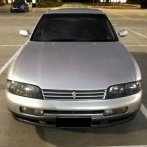Head Port Size, Velocity Vs Horsepower
Announcements
-
Similar Content
-
Latest Posts
-
By joshuaho96 · Posted
Adjusting the idle screw is usually (emphasis on usually) just covering up deeper issues. Stuff like the cold start valve not closing properly. Throttle shaft seals on the way out. Coolant temp sensors getting out of spec. Coolant temp sensors especially can be a bear to diagnose because they can fail subtly. My dad just spent weeks chasing down his high idle. He cleaned the coolant temp sensor and everything but the resistance curve just drifts over time and if it's been 20+ years they also get super slow to respond as well. Has a massive effect on fuel economy as if it's off the ECU is going to run richer and command high idle for far longer than it should otherwise. -
How old is the battery, it's more likely your battery is on its way out.
-
I reckon you'd get 90% off. My washer doesn't get between spokes very well. Haha! I love my Gerni! Argh! Steam cleaning has its place for sure.
-
Hey all, I did a voltage test with the car (video attached) not running for 3 days. And here is some interesting stuff: - Battery voltage is 12v (I had the key in the ON position) - Drops to 9.76v while cranking then quickly goes up to 14.5v - You will notice there was a sorta slow start but not as slow as it usually is. - Idle surprisingly was better at just over 1,000rpm instead of 1,100 rpm. - I turned on the A/C, radio and headlights in the video and the voltage remains the same - I haven't cleaned the grounding wires on the chassis yet, that's next. - Battery drops to 12.6v when I turn off the car and wait a bit Seems like I might have a parasitic draw? I do have an immobiliser system which does drain the battery more of course but was wondering if there is anything else I should be looking at fixing? Does the ground wires on the chassis have anything to do with the low 12v? SAU.avi
-
My lord that is some low oil pressure as minimum in the manual! I guess the big part will be seeing how it changes as the engine gets more spirited use.
-







Recommended Posts
Create an account or sign in to comment
You need to be a member in order to leave a comment
Create an account
Sign up for a new account in our community. It's easy!
Register a new accountSign in
Already have an account? Sign in here.
Sign In Now